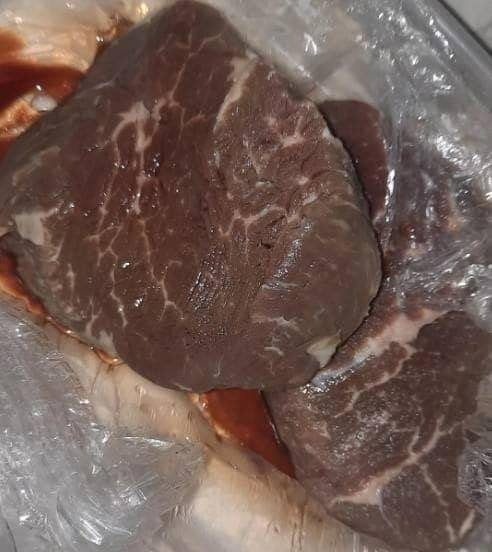ADVERTISEMENT
- Smell: One of the most reliable ways to determine if your ground beef is still safe to eat is by smelling it. Fresh ground beef should have a neutral or slightly metallic odor. If the beef smells sour, rancid, or off in any way, it is likely spoiled and should be discarded.
- Texture: Fresh ground beef should feel firm and slightly moist to the touch. If it feels slimy, sticky, or overly soft, this could indicate spoilage. Spoiled ground beef may also develop a change in texture, making it mushy or sticky instead of firm.
- Expiration Date: Check the sell-by or use-by date on the packaging. If the ground beef is past its expiration date, it may be more likely to spoil, regardless of its color. If you’re unsure about the freshness of the beef, it’s better to err on the side of caution.
- Storage: How the meat has been stored also plays a significant role in determining its safety. If the beef has been stored properly in the fridge (at 40°F or lower) and has only changed color due to oxidation, it should still be fine to cook. However, if the beef has been left out at room temperature for more than two hours (or one hour if the temperature is above 90°F), bacteria can multiply quickly, making it unsafe to eat.
- Packaging: If the beef has been vacuum-sealed or packaged tightly, it may maintain its red color longer due to limited exposure to oxygen. However, once you open the package and the beef comes into contact with air, the color change can happen rapidly. As long as there are no other signs of spoilage, the color change itself is not a concern.
How to Tell If Ground Beef Has Gone Bad
While a grayish color doesn’t always signal that ground beef is spoiled, you should also look out for other signs of spoilage. Here are a few additional indicators to check for:
- Foul or sour odor: As mentioned earlier, the smell of ground beef is a reliable indicator of whether it’s still safe to eat. A sour or rotten smell is a clear sign that the beef has gone bad.
- Discoloration beyond gray: If the ground beef has turned a shade of green or developed a blackish hue, it is likely spoiled and should be discarded. These unusual colors indicate the growth of bacteria or mold.
- Excessive liquid: While ground beef will release some liquid as it sits, an excessive amount of liquid or pooling of liquid in the packaging could indicate bacterial growth. This could be a sign that the beef is no longer safe to consume.
- Change in texture: As mentioned above, if the beef feels slimy, sticky, or mushy, it’s a sign that bacteria may be present, and the meat should not be consumed.
How to Properly Store Ground Beef to Prevent Spoilage
Proper storage is essential to keeping your ground beef fresh for as long as possible. Follow these tips to minimize spoilage and extend the shelf life of your ground beef:
- Refrigerate Promptly: After purchasing ground beef, refrigerate it immediately at a temperature of 40°F or lower. If you don’t plan on using it within a couple of days, freeze it for longer storage.
- Use within a few days: Fresh ground beef typically lasts 1-2 days in the fridge. If you don’t plan on cooking it in that time frame, freeze it to maintain its freshness.
- Freeze for Long-Term Storage: Ground beef can be safely frozen for up to 3-4 months. Be sure to store it in an airtight container or vacuum-sealed bag to prevent freezer burn.
- Check for Leaks: When purchasing ground beef, check the packaging for any leaks. If the packaging is damaged, bacteria can quickly enter, leading to faster spoilage. Opt for fresh, well-sealed packages when possible.
Conclusion: Gray Ground Beef Is Often Safe, but Pay Attention to Other Factors
To sum it up: Yes, it’s usually safe to eat ground beef that has turned gray due to oxidation. The change in color doesn’t necessarily mean the meat is spoiled. However, you should always check for other signs of spoilage, including an off odor, slimy texture, and discoloration beyond gray. If any of these signs are present, it’s best to discard the meat to avoid foodborne illness.
As long as the beef has been properly stored, has no foul smell, and maintains its firm texture, you can confidently cook and enjoy it—even if it looks a little gray.
When in doubt, trust your senses—smell, touch, and sight are your best tools when determining whether ground beef is still good to eat. With the right precautions, you can keep your meals safe and delicious every time!
ADVERTISEMENT
